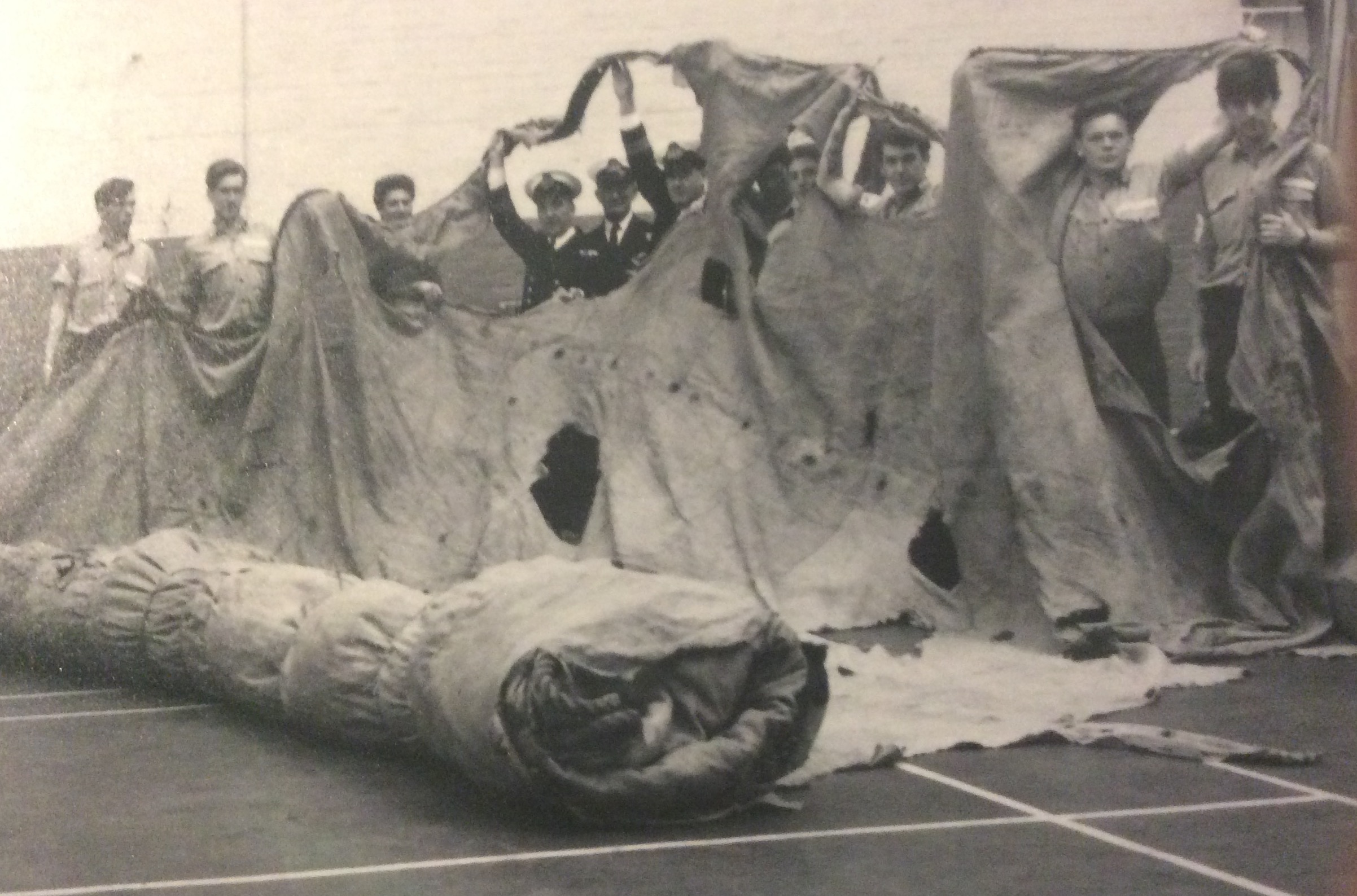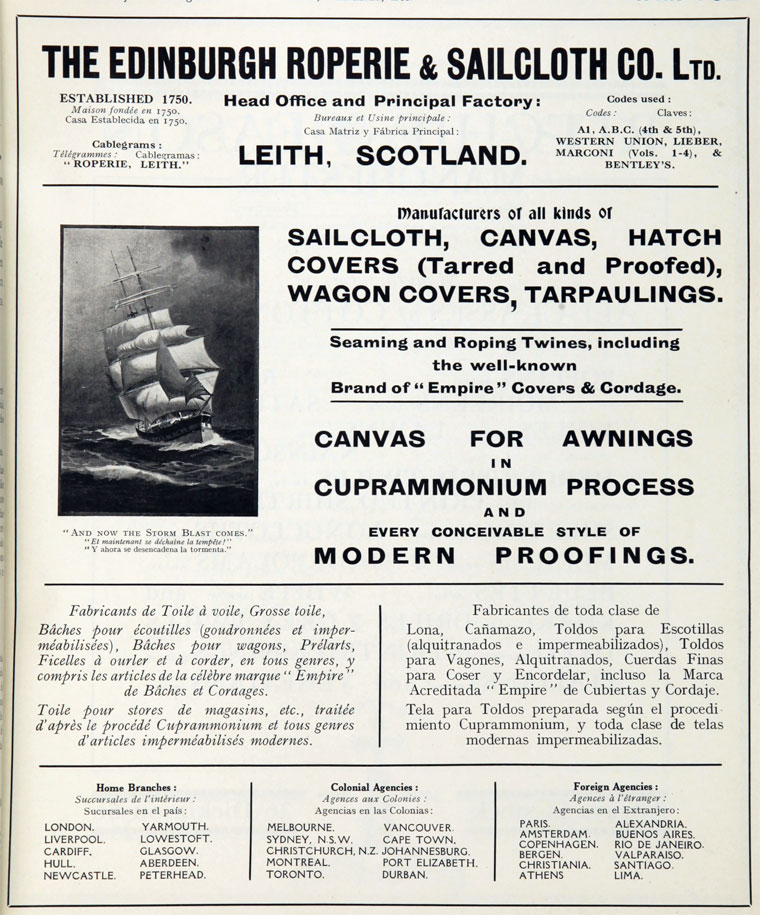Ties that bind…storm sails and snorters!
Posted on May 24, 2019
I’ve recently been researching into the Edinburgh Roperie and Sailcloth Company here in Leith for storytelling projects with Citizen Curator and Our Linen Stories and so I was fascinated to find out that Leith was a world leader in sails and rope.
I’ll be at Customs House Lane this weekend sharing stories of maritime migration and Leith ships as part of my sponsorship drive to Tell Tales on Ten Tall Ships – we’re not far from the equator in monetary terms – to help me cross the line you can donate to my JustGiving page.
A full suit of sails took up 25,000 sq. feet (or 2, 315 sq. metres) of canvas and the weight of the largest sail was upwards of a ton when dry and double that when wet. The cost of canvas to the ship owner was up to £1000 per annum in a good year and double in bad years. There was however a far greater cost in terms of the life of the men aloft. In 1906 two men died on The Glenlee on a passage to South America, Arnold Ringrose age 19, an apprentice on his first voyage and able seaman Henry Pearson age 39 both washed overboard whilst on the yard arms.
On Tall ships like The Glenlee, approaching Cape Horn rigging the storm sails took two days. The Clydebuilt Cape Horner’s were carthorses in comparison to the stallions or greyhounds of the sea the Tea clippers. Time was money and British ships had to really hustle for a cargo, as the French ships were subsidised.
The notorious storms of the Roaring Forties and the Cape Horn Snorters were not the only danger on board ship, the loading of the cargo, supervised by the Captain and the mate, could also be a matter of life and death. A shift in the cargo during a storm could mean disaster, a cargo of rotting Guano could emit enough ammonia fumes to kill the ships cat and give sailors severe nosebleeds.
What’s in a name? Glenlee was one of a fleet of ships with ‘Glen’ in their name and she was built for and by the Anderson Roger & Company in Glasgow. She was sold and renamed several times: Islamont, Clarastella, Galatea before returning home from Spain where she had become a Spanish Naval training ship to refit restore and reclaim her former glory and title.
Eight out of ten of the Glen ships were lost, 5 wrecked, 2 casualties of war and 1, the Glengowan lost by fire. Timber was also a dangerous cargo and much to the dismay of the crew on these voyages smoking was strictly forbidden. Another cargo coal could self-combust, and in July 1907, with the memory of the loss of The Glengowan still fresh, there was mutiny on board The Islamont as the temperature of the coal in the cargo hold rose.
To get a feel for the dangerous trip around Cape Horn watch Irvine McClure Johnson’s film and wonder at the bravery of the sailors who sailed through the Snorters in the Clydebuilt Capehorners.





